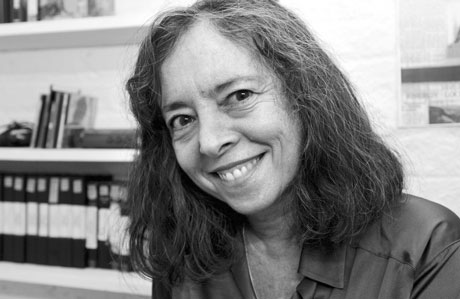By Willa Paskin
No one ever said making a film was easy. Just ask Karen Kramer, who has been working on “The Ballad of Greenwich Village,” a documentary about the Village’s past and present, for over nine years.
The film chronicles the Village as a bastion of bohemia, generation after generation, from the early 1800s to the present. Kramer gathered historical materials and interviewed both famous and not-so-famous Village residents, for the project, from actor Tim Robbins and Norman Mailer and other writers to painters, guitar makers and shop-owners. Kramer was unwilling to settle for just “talking head” interviews and instead went into people’s homes and watched them go about their daily routines to capture how people living in the Village actually live.
The effort involved in conducting interviews and gathering historical images has made this the most complex project Kramer has ever worked on. Getting interviews with reclusive stars and racing against the clock to speak with important individuals and film historic locations have been some of the major challenges.
Kramer plans to use more than 100 photos and images from different archives around the city and the country, each of which, Kramer describes as “having its own labyrinth attached to it.”
Despite the difficulties, she remains extremely enthusiastic about her project, an enthusiasm that springs from an obvious love of her neighborhood. She calls the project a “tremendous joy” and has unbounded interest in stories about the area. Yet it is a marked change in subject matter for her, having spent most of her career filming other cultures, from Haiti and the Caribbean to Pentecostal congregations in Appalachia.
As a filmmaker she always wanted “to show one half of the world what the other half was doing.”
“I never thought I would be doing a film about this,” Kramer says. “I was so in love with the Village and so entrenched in it that I never thought about making a film about my own backyard.” This changed when a chance encounter with an older Village resident while on line at a Cornelia St. store piqued Kramer’s interest. This woman’s stories prompted Kramer to begin documenting the living histories of Village residents before it was too late. Before long, Kramer felt it was not just the living history of the Village that needed documenting, and launched into a decade-long undertaking to track the 200-year history of the Village.
Kramer is not without thoughts on the Village’s present. Faced with increasing rents, it is pretty difficult for anyone with an alternative lifestyle to call the Village (or almost anywhere in Manhattan) home anymore. But for Kramer, the Village is no less significant because it is no longer the cradle of bohemian culture. Rather, Kramer says, “What happened in the Village is still reverberating throughout American and world culture…the art movements, the political movements, the ideas. People are still living today [with those influences], sometimes without even knowing it came from the Village.”
The film is now in post-production; it is being edited, music is being added, the narration written and archival images are being amassed. Most of the 15 archives that Kramer is dealing with require a good deal of money for access to items in their catalogues, even if the item in question is already part of the public domain.
In some cases, depending on where their image is used, in commercial or art house venues, the archive would charge a different fee. Considering that “Ballad” is a documentary, even a large release would probably mean it was only being shown at a few theaters throughout New York.
When asked how long it would take for the film to be finished if she had all the funds, Kramer laughed and said that if she had $100 for every time someone asked her when the film would be done, it would be done. Or, she corrected herself, if she could pull together all the archival footage she wants, the film would be finished in four or five months.
Yet Kramer does not seem too discouraged by the difficulties and lack of funds.
“Everyone thinks it’ll only get done when I get a big grant or a big donation from a corporation,” he says. “But I’ve come this far by donations from local people and local businesses and that’s what’s propelling the film forward at this point. We’ve come so far, but we’ve got a ways to go.”
Kramer remains hard at work, putting the film together and leaving space for the footage she knows she will get eventually. In the meanwhile, Kramer is soliciting contributions to help move the project along to completion a bit faster.
Tax-deductible donations for “The Ballad of Greenwich Village” documentary project can be made to Community Environments Inc. and mailed to Karen Kramer at 22 Leroy St., Apt. 16, New York, NY 10014. Kramer can also be contacted by e-mail at kramerkar@aol.com.































